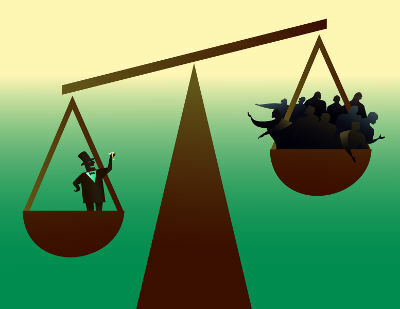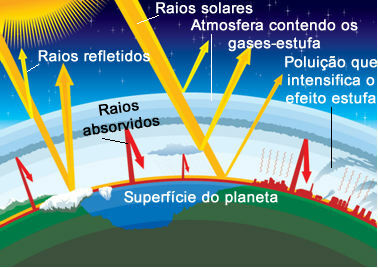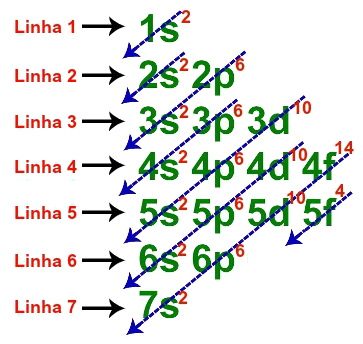O Capitalism it is a system in which private property prevails and the constant search for profit and capital accumulation, which manifests itself in the form of goods and money. Despite being considered an economic system, capitalism extends to political, social, cultural, ethical and many other fields, making up almost the entirety of the geographic space.
The basis for the formation, consolidation and continuity of the capitalist system is the division of society into classes. On the one hand, there are those who own the means of production, the bourgeoisie; on the other hand, there are those who live off their workforce, by receiving salaries: the proletarians. In the case of the agrarian environment, this relationship is also present, as land owners generally landowners, earn profits on the work of peasants.
With the era of Globalization, the capitalist system became predominant in practically the whole world. However, its phases and stages of development do not occur equally in the entire world space, because its logic of production and reproduction is purely unequal. Thus, some nations have more advanced stages of capitalism and others have its initial aspects. To know these phases and aspects, it is important to know the emergence and history of capitalism.
Emergence and development of the capitalist system
The process of emergence of capitalism was slow and gradual, starting in the so-called Low Middle Ages (from the 13th to the 15th century), with the formation of small commercial cities, called boroughs. These cities challenged the order then in force at the time, that of feudalism, in which Europe was divided into several manors, each commanded exclusively by its Feudal Lord. Usury was condemned by the Catholic Church, the most powerful institution in the Middle Ages, which made it even more difficult for the birth of the new system that was in emergency.
Over time, the power of the class that traded in the burgs, the bourgeoisie, expanded and the accumulation of capital spread. This factor, associated with the growth of these cities and the consequent process of relative urbanization in Europe, in addition to historical factors (such as the Crusades), caused a gradual downfall of the feudal system and the rise of capitalism. The main event that marked the formation of this new economic model of society was the realization of the Grandes Navegações at the end of the 15th century and beginning of the 16th century.
With its formation, the new system went through three main stages of development, namely: capitalism commercial, O industrial it's the financial.
commercial capitalism
In its period of emergence and consolidation, capitalism did not yet know industrialization or the formation of large urban densifications. Thus, the economy in this period was essentially centered on trade and wealth
of nations was measured by the accumulation of raw materials and spices or the ability to access them. Therefore, the period from the 16th century to the mid-18th century is called Commercial Capitalism.
The economic model practiced in this period was called Mercantilism and it was characterized by the strengthening of National States and their strong intervention in the economy. Its role was to ensure maximum accumulation of profits by the bourgeoisie and aristocracy, as well as to compete for international markets and better access to raw materials. The basic premises of mercantilism were: a) search for low-cost raw materials; b) production of manufactured goods; ç) metalism (maximum accumulation of precious metals) and d) the search for an always favorable trade balance, that is, exporting and selling more than importing and buying.
Do not stop now... There's more after the advertising ;)
Industrial Capitalism
The two historical factors that brought about the transition from commercial capitalism to industrial capitalism were the Industrial Revolution (1760-1820) and the French Revolution (1789-1799). Such events allowed the stabilization of power in the hands of the bourgeoisie, centering the economy on the main activity developed and administered by this class: industrialization.
During this period, Europe, especially England, exercised great power over the world, from the perspective of colonialism and the imperialism, by importing raw materials from the peripheries and colonies of the planet and then exporting its products industrialized. This continent also went through intensive industrialization processes, forming large cities that, at the beginning, they did not have great structural conditions, presenting a great amount of miserable and housing precarious.

The growth of the bourgeoisie represented the maximum expression of socioeconomic inequalities
The predominant economic model in this period was the economic liberalism, elaborated by Adam Smith and which advocated minimal State intervention in economic practices. This position consolidated the maximum power of the bourgeoisie, since it would be it – in the figure of the Market – who would control the progress of the economy.
Financial or Monopolistic Capitalism
The transition from capitalism to its financial phase took place through the investment process of banking capital over industrial capital. This factor led to the emergence of large companies, which began to be divided into shares that were traded as commodities, being more valued as company profits increased.
With this, the economy was no longer centered on industrial practices, but on speculative and financial practices. The search for capital accumulation intensified and reached levels never seen in human history.
With the 1929 crisis, the economic model was changed and the system Keynesian it became hegemonic. This system was developed by the English economist John Maynard Keynes, who advocated a return to the so-called “Strong State”, that is, with its maximum intervention in the economy. This model was also called welfare state (Welfare State) and aimed at maximum consumption in order to supply industries and generate more jobs.
During this period, the Transnationals, also called Multinationals or Global Companies, which quickly settled in several countries, mainly the underdeveloped ones, in search of raw material, cheap labor and expansion of the consumer market. These companies increasingly dominate the international market, monopolizing it.
From the 1980s onwards, Keynesianism collapsed in favor of neoliberalism, which returned to the ideal of minimum participation. of the State in the Economy, which should only act to ensure the reproduction of the system and save the market from possible crises economical.
Currently, although some books and authors point to the emergence of a informational capitalism, most economists argue that we are still in the financial phase of the capitalist system. The so-called technical-scientific-informational means is seen as a powerful instrument for the globalization of capitalism and for sustaining its current characteristics.
By Me. Rodolfo Alves Pena



